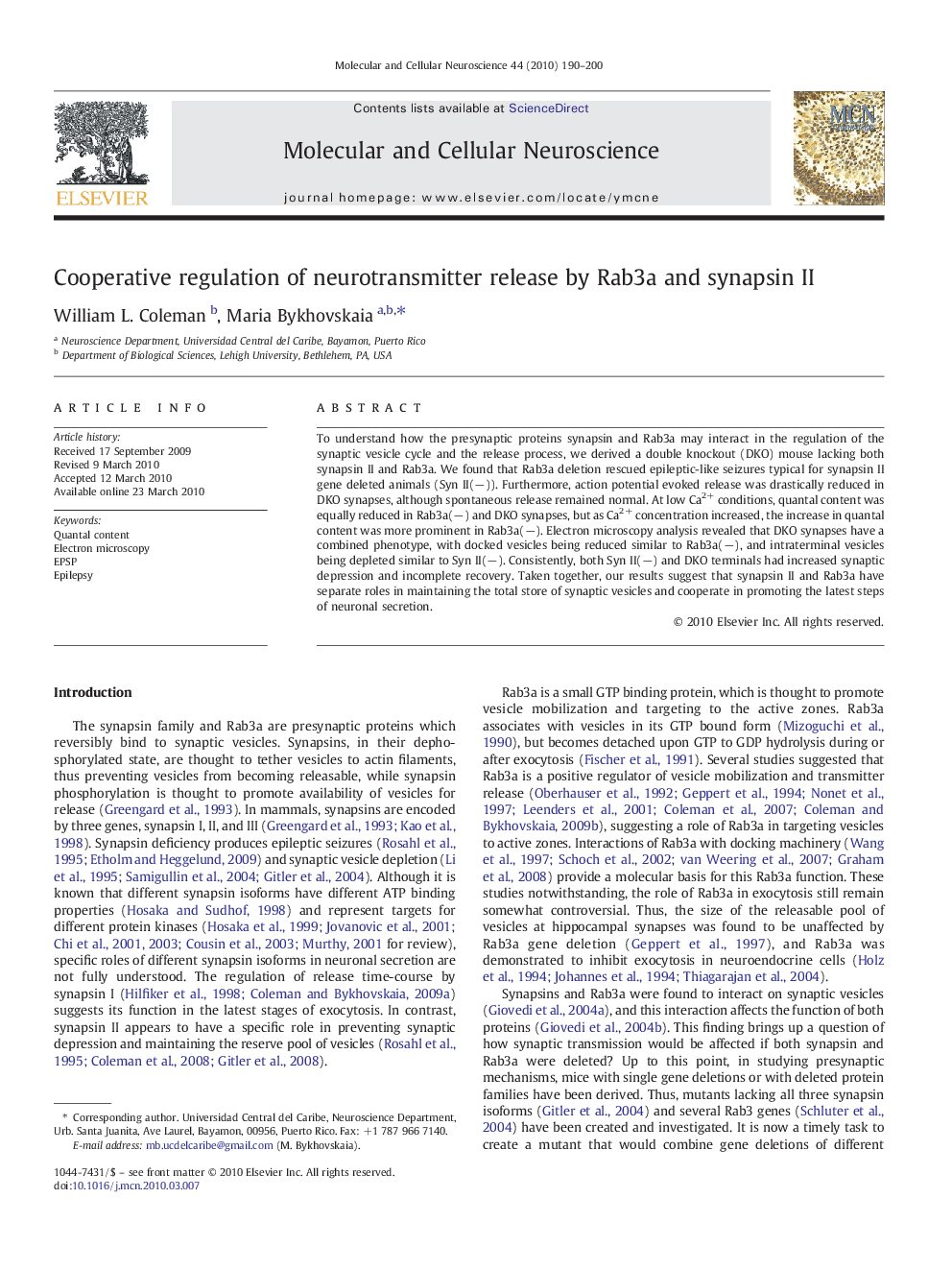| Article ID | Journal | Published Year | Pages | File Type |
|---|---|---|---|---|
| 2198808 | Molecular and Cellular Neuroscience | 2010 | 11 Pages |
To understand how the presynaptic proteins synapsin and Rab3a may interact in the regulation of the synaptic vesicle cycle and the release process, we derived a double knockout (DKO) mouse lacking both synapsin II and Rab3a. We found that Rab3a deletion rescued epileptic-like seizures typical for synapsin II gene deleted animals (Syn II(−)). Furthermore, action potential evoked release was drastically reduced in DKO synapses, although spontaneous release remained normal. At low Ca2+ conditions, quantal content was equally reduced in Rab3a(−) and DKO synapses, but as Ca2+ concentration increased, the increase in quantal content was more prominent in Rab3a(−). Electron microscopy analysis revealed that DKO synapses have a combined phenotype, with docked vesicles being reduced similar to Rab3a(−), and intraterminal vesicles being depleted similar to Syn II(−). Consistently, both Syn II(−) and DKO terminals had increased synaptic depression and incomplete recovery. Taken together, our results suggest that synapsin II and Rab3a have separate roles in maintaining the total store of synaptic vesicles and cooperate in promoting the latest steps of neuronal secretion.
